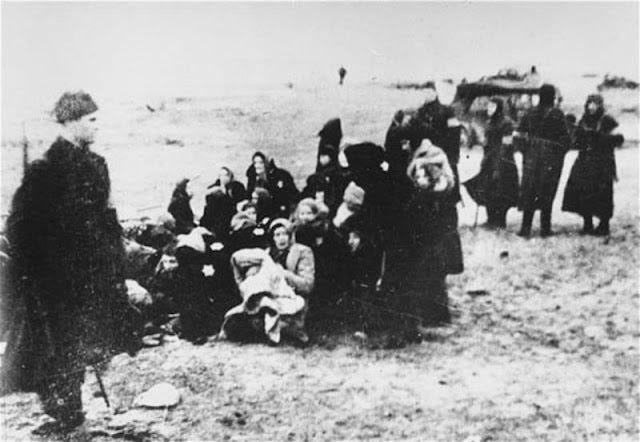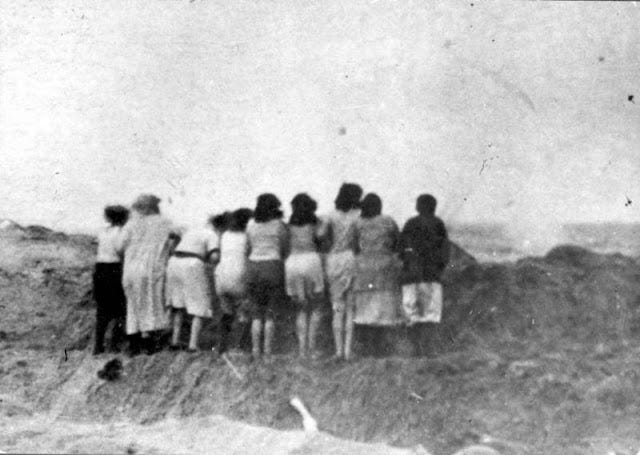Evidence of Mass Murder
15th December 1941: The German photographic evidence taken at the Skede Beach massacre Liepāja, Latvia

The work of the Einsatzgruppen continued apace in the occupied territories of Eastern Europe. In the Baltic port of Liepāja, Latvia most of the Jewish men had been shot in a series of mass executions in the dunes outside the town. This was no different from what was occurring in many hundreds of other locations across the region.
But Liepāja was an important Naval base as well as a port, with many German naval personnel stationed there. Large groups of them travelled to the beaches outside Liepāja to watch the killings. Among them, in early August 1941, was Kriegsmarine Sergeant Reinhard Wiener with his 8mm film camera. He was to take the only known moving images of the Holocaust. The footage shows groups of ten men being forced to run into deep trenches in the sand dunes and then being shot from above.
It is very clear that there were dozens, possibly hundreds, of Wehrmacht troops attending the event. Some witnesses have spoken of a “carnival atmosphere.”
The United States Holocaust Memorial Museum has a clear version of the film of the shootings.
This rare footage shows a mobile killing unit during a massacre in Liepaja, Latvia. The film was taken, contrary to orders, by a German soldier. Before the war, the Jewish population of Liepaja stood at more than 7,000 residents. German mobile killing squads shot almost the entire Jewish population of the town. When the Soviet army liberated the city in 1945, just 20 to 30 Jews remained.
Wiener’s film would be remarkable enough but in December 1941 the SS decided to kill most of the remainder of the Jews in Liepāja - mainly women and children, and there is also evidence of this.
On this occasion the Germans took photos of the killing – the photographer was SS-Scharführer Carl Emil Strott. This was probably not unusual - at the the time the SS were keeping daily records of their killing tallies and proudly reporting their achievements to SS Headquarters.
What is unusual is that the photographs survived. Later in the war the SS would make determined attempts to destroy all evidence of the Holocaust, burning not only documents and photographs but digging up bodies and burning them as well.
The only reason these images survive is that David Zivcon, who worked as an electrician in the offices of the German Security Service in Liepaja accidentally found four rolls of film when he was asked to repair the wiring. He managed to take the film negatives, have copies made of some of the images, and then return the originals. His copies were placed in a tin and buried in a stable until after the war.




Liepaja Jews.org has the most comprehensive account.
French language analysis of the images for identification purposes:
http://www.laboratoiredanthropologieanatomiqueetdepaleopathologiedelyon.fr/SORELLA%20EPSTEIN/A%20la%20recherche%20de%20Sorella%20Epstein,%20une%20enfant%20dans%20la%20tourmente%20de%20la%20Shoah.htm








